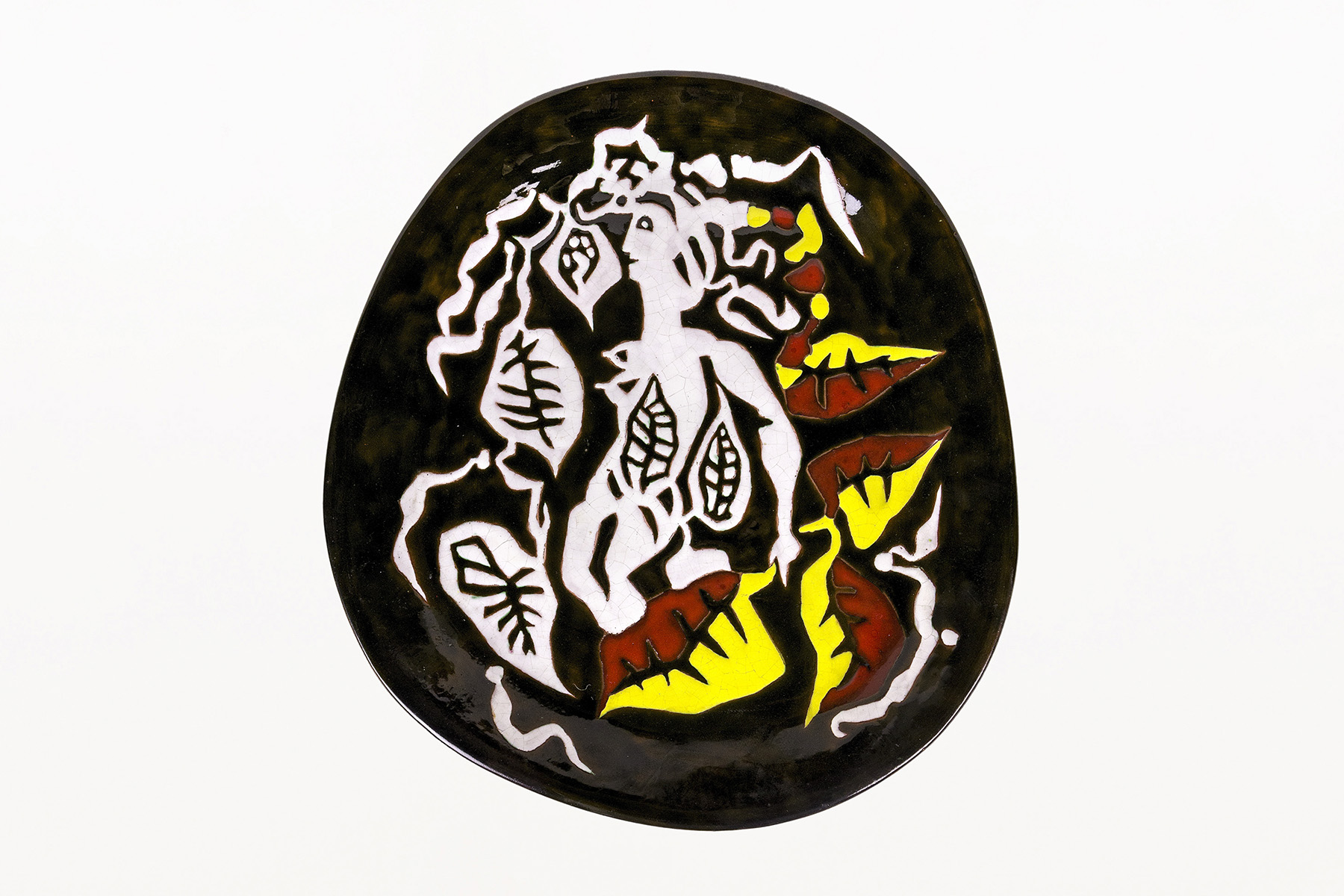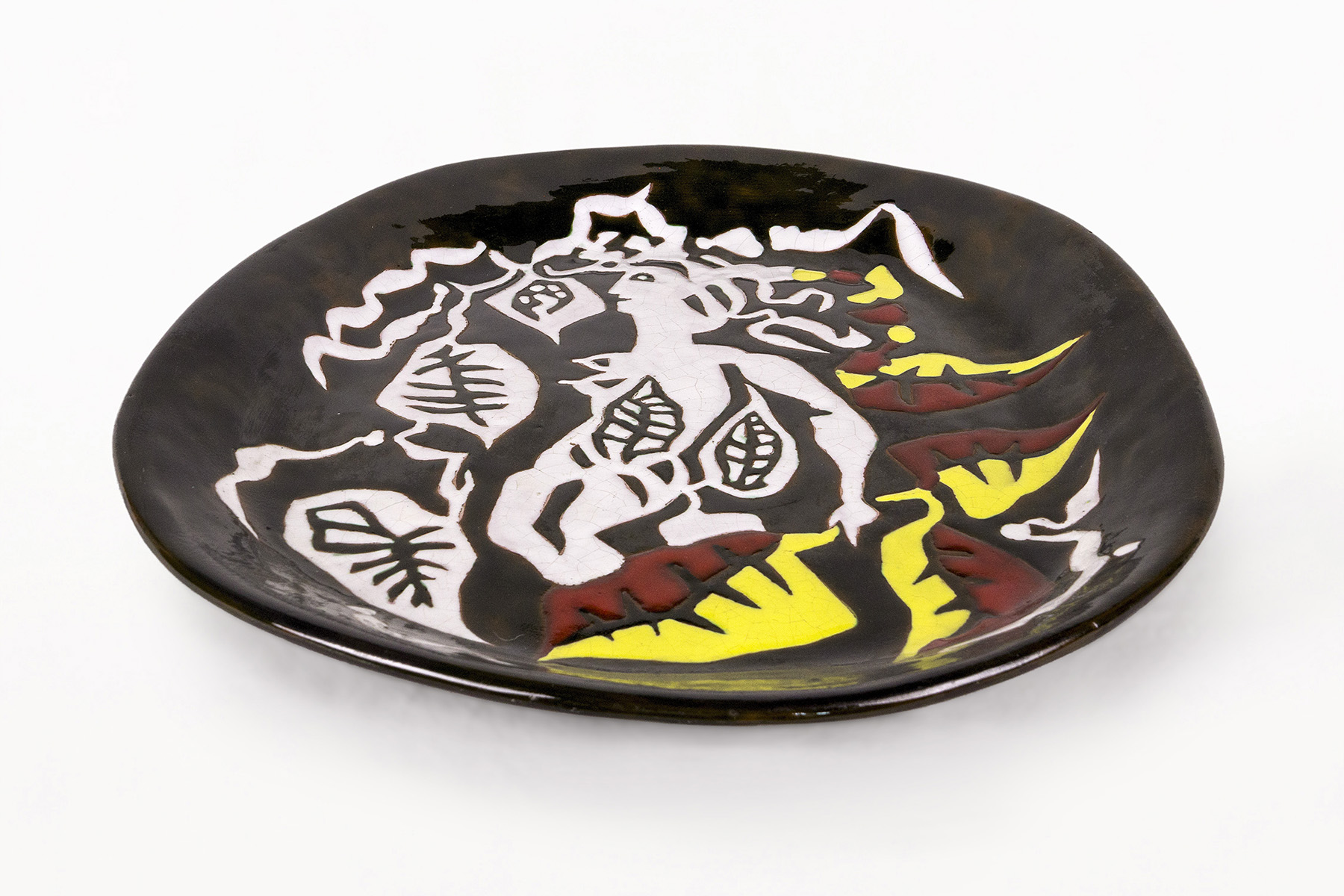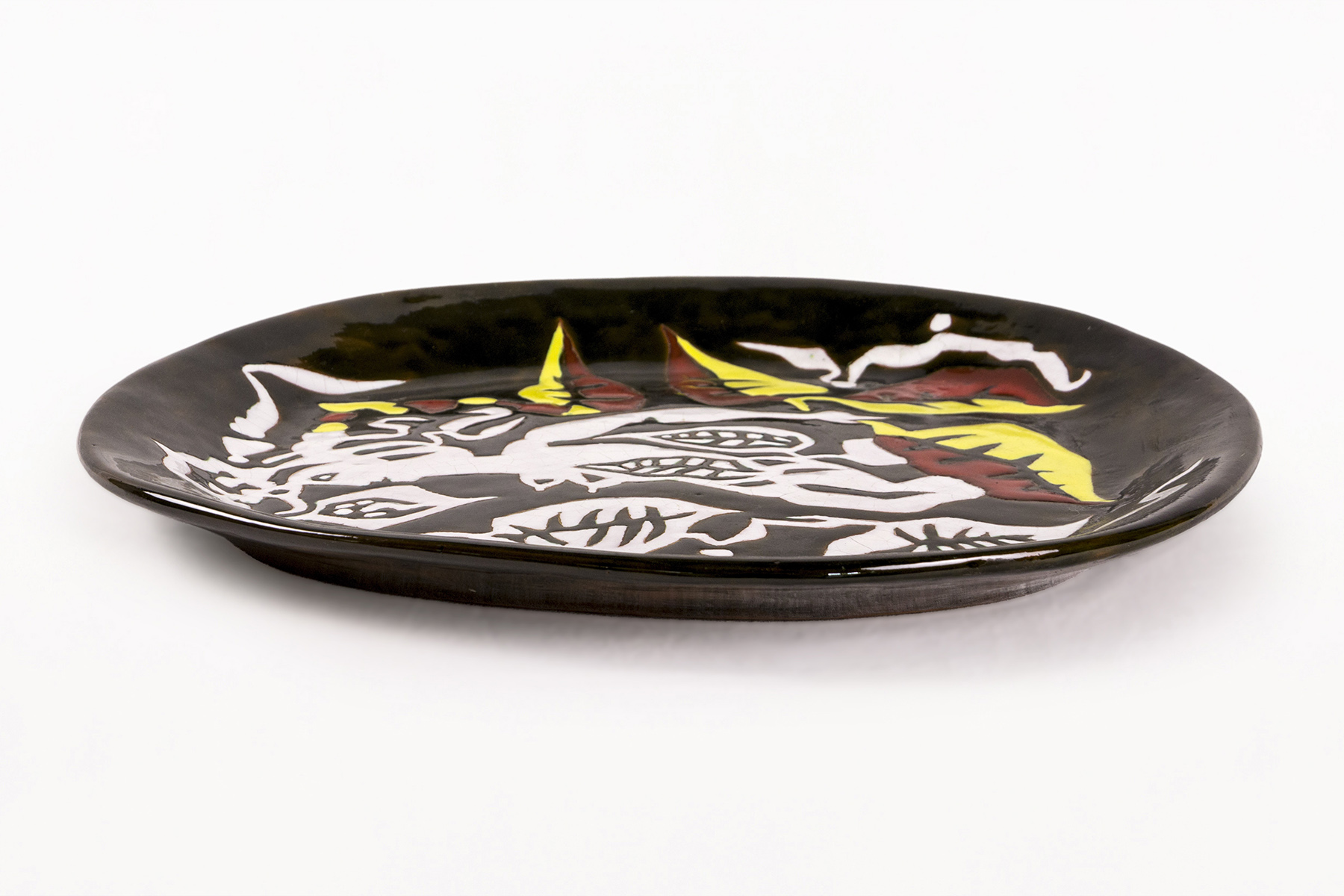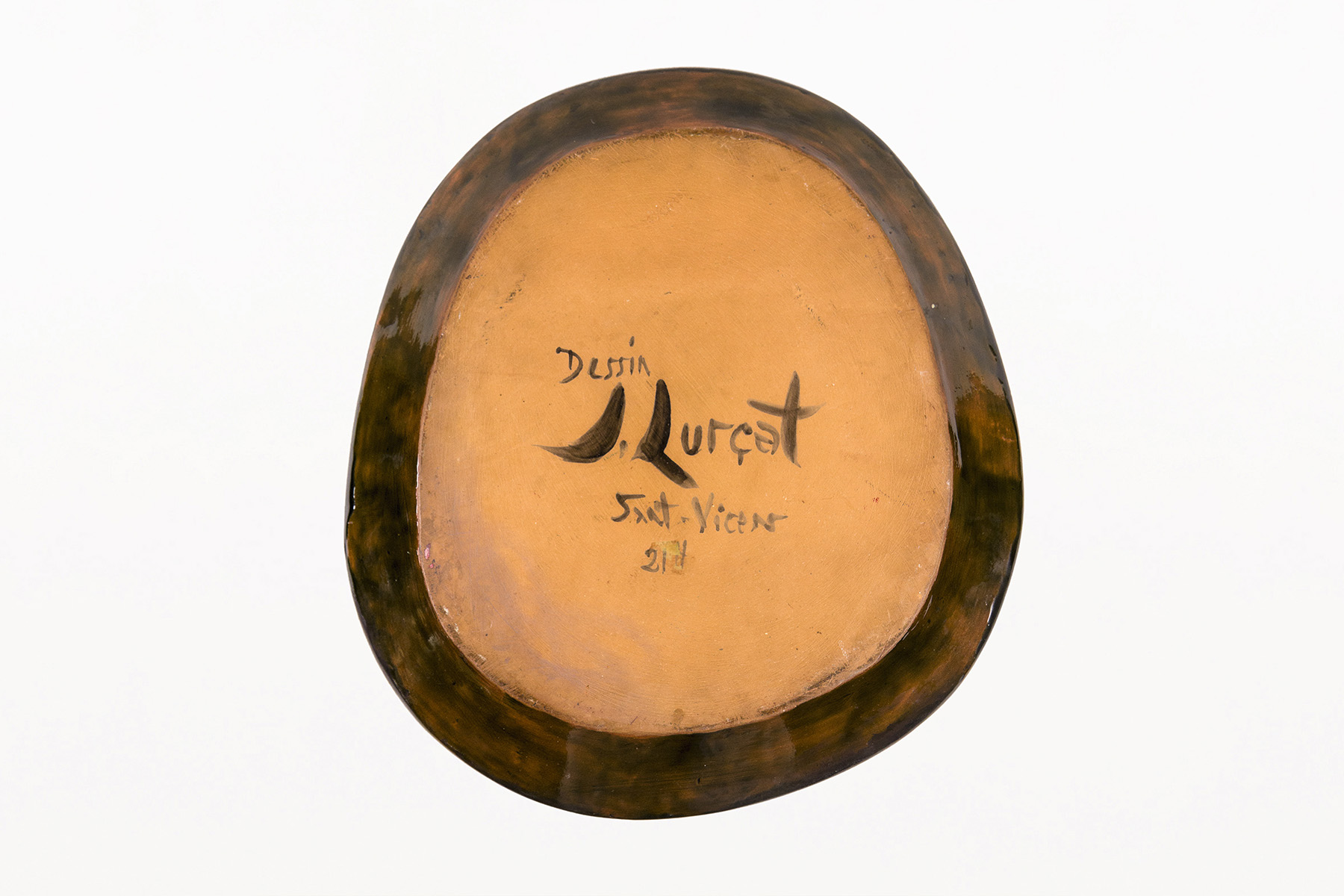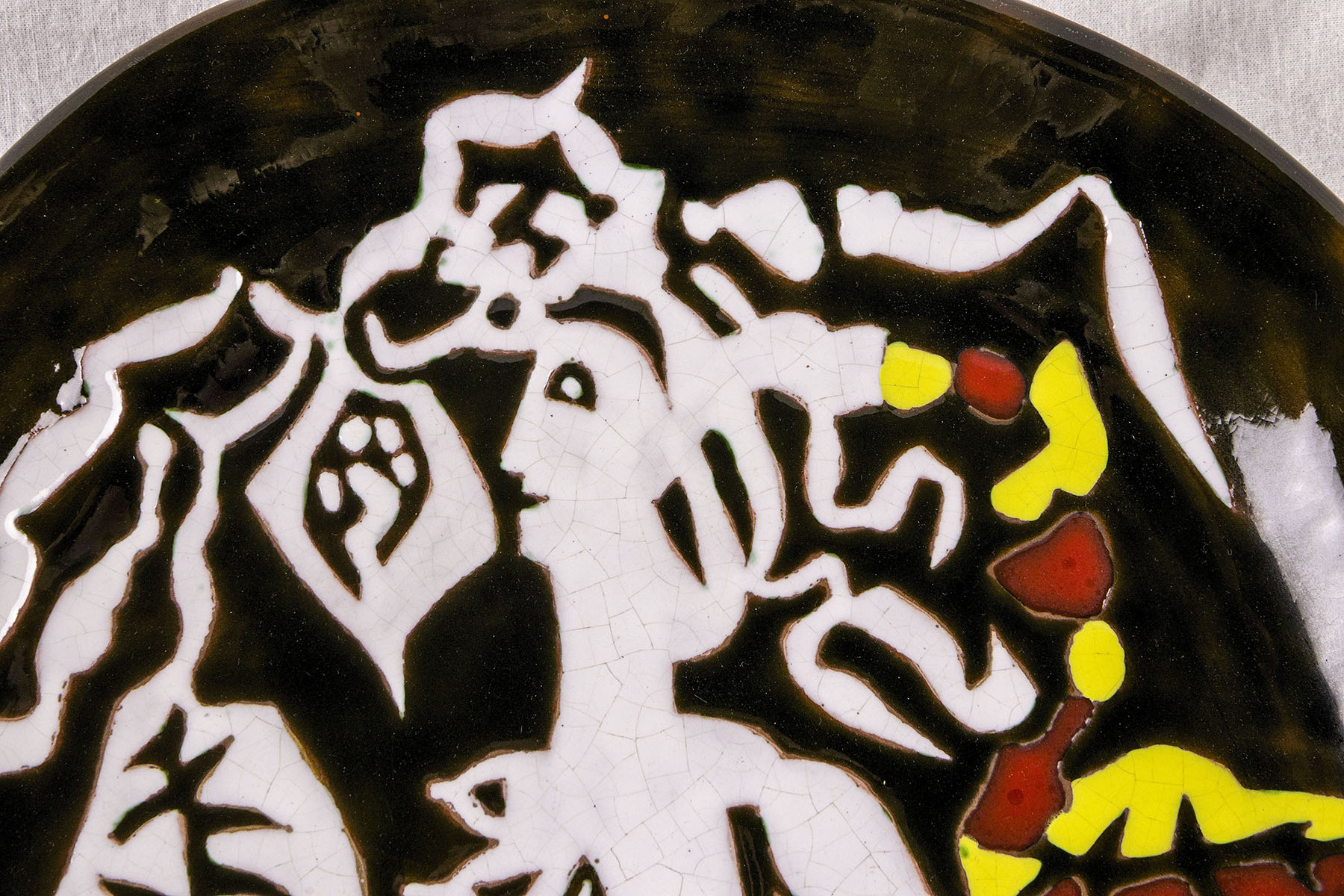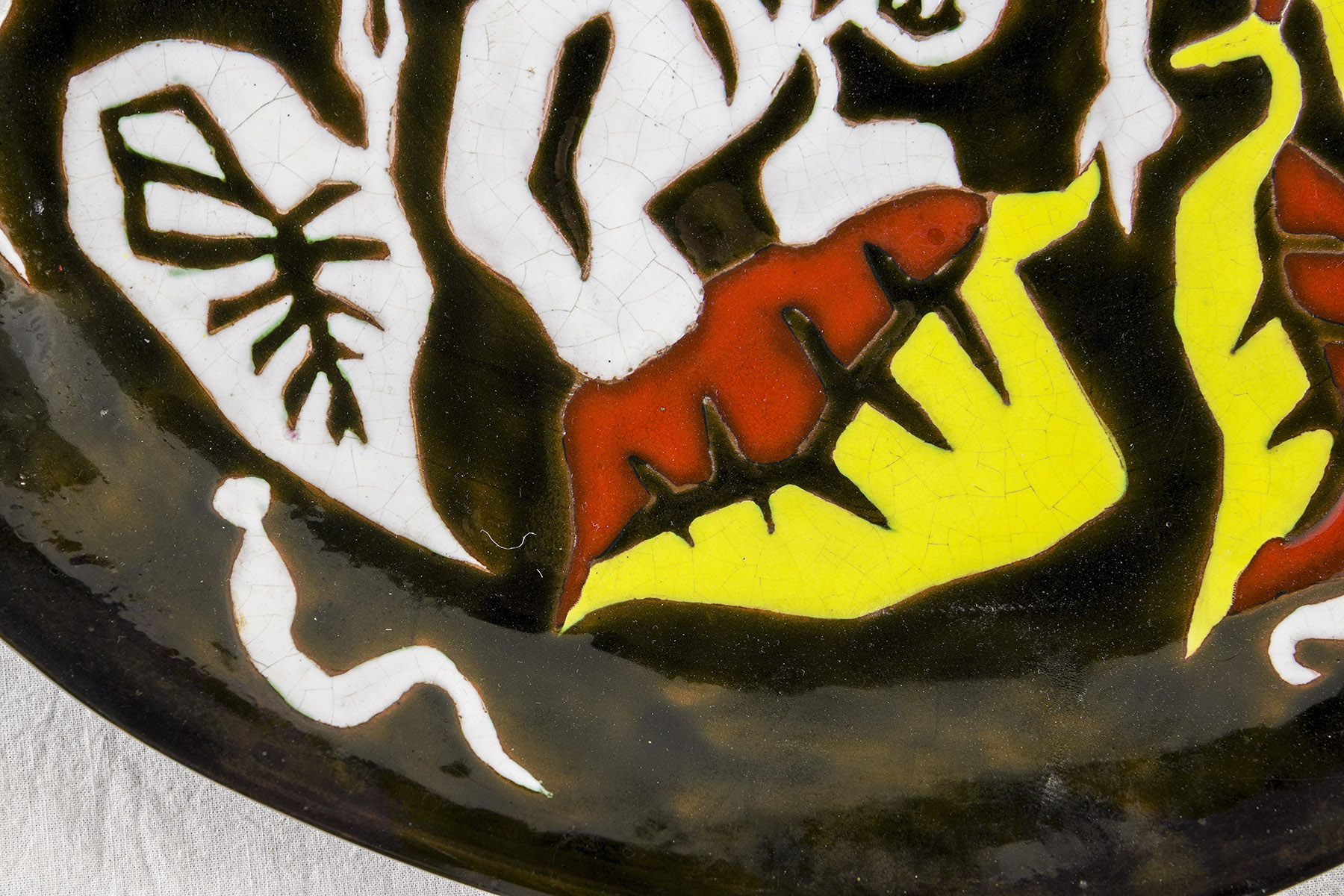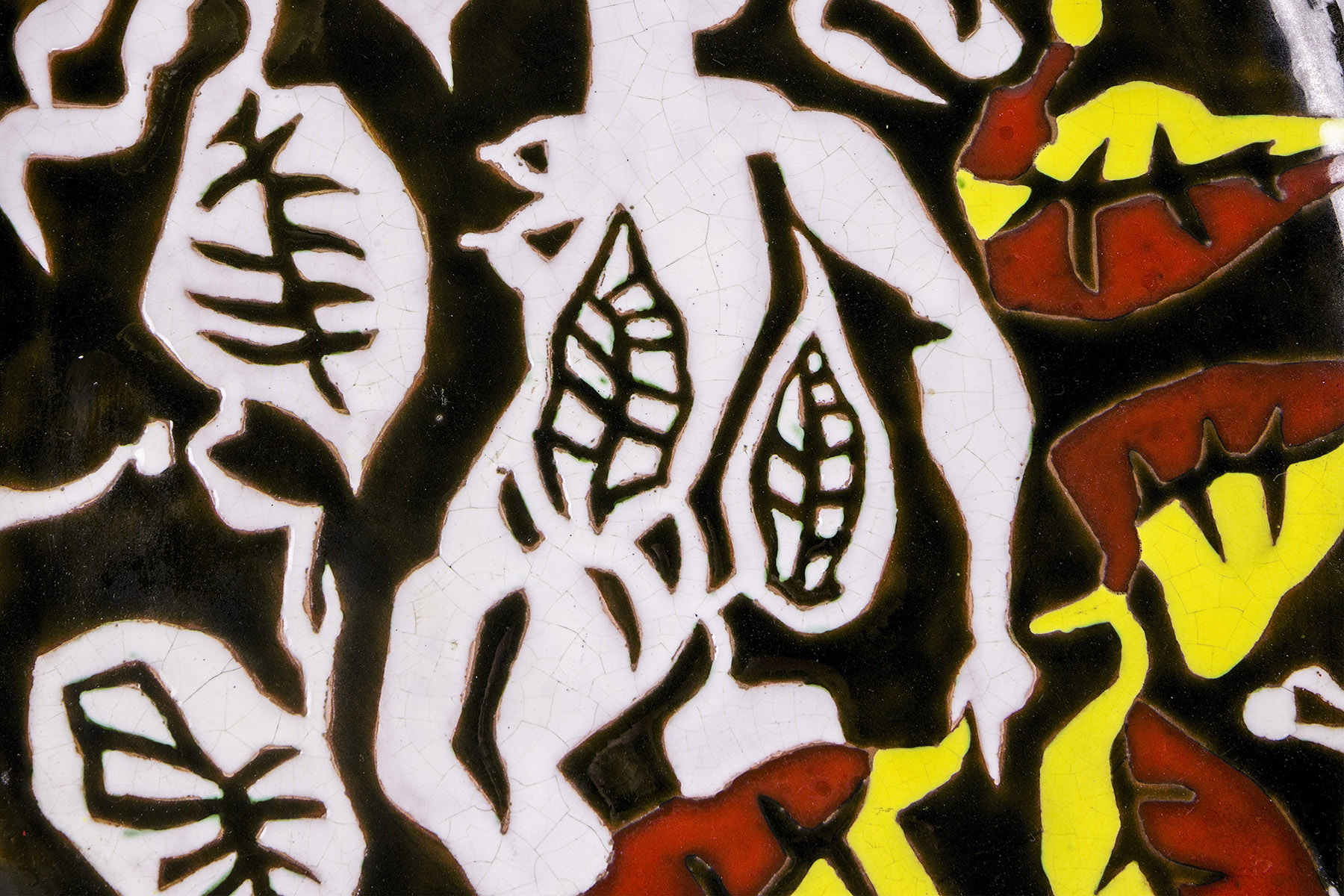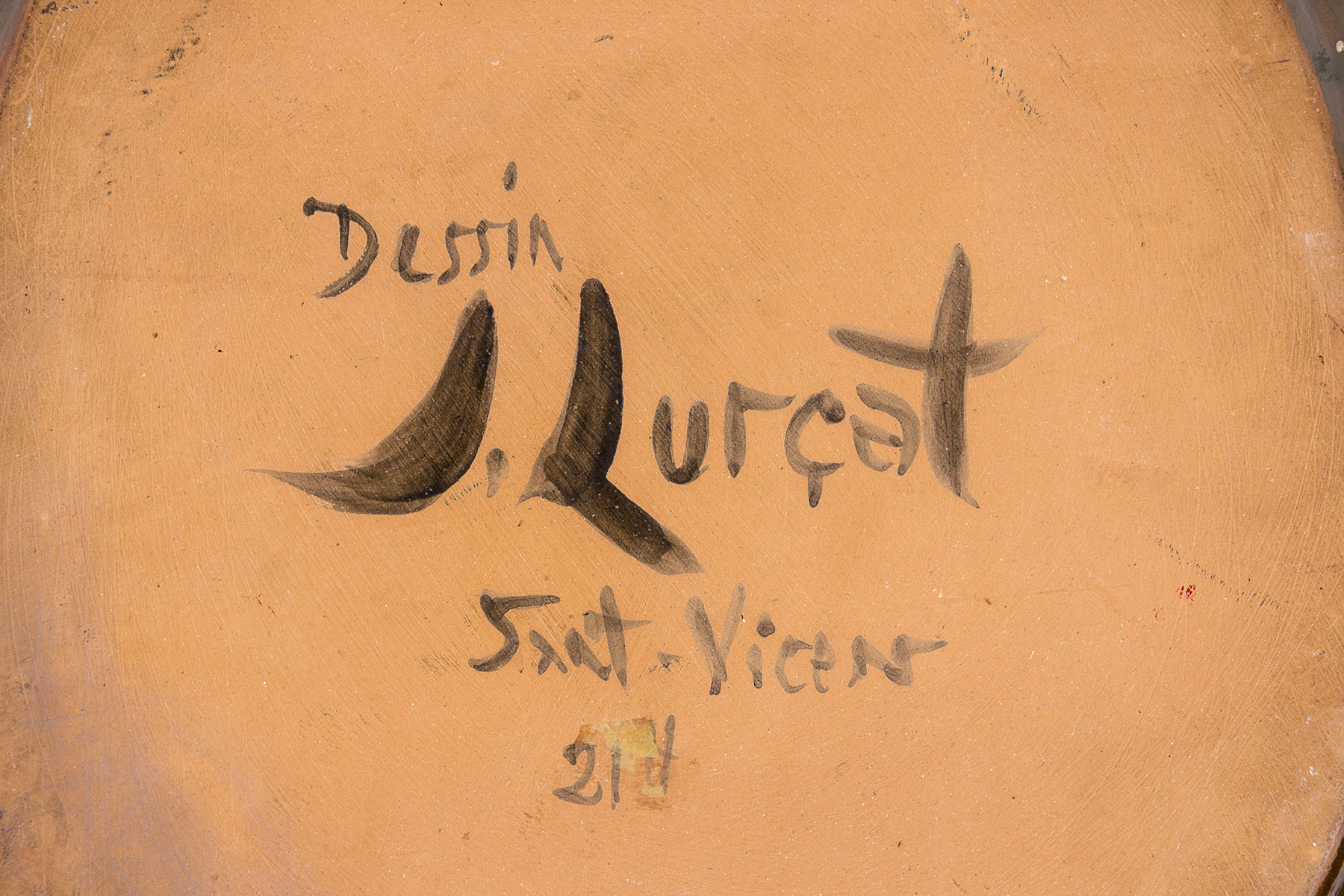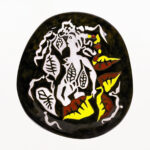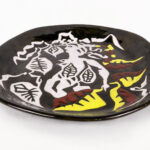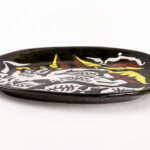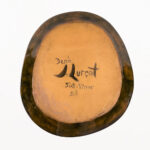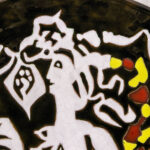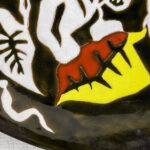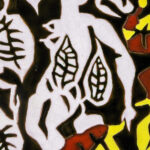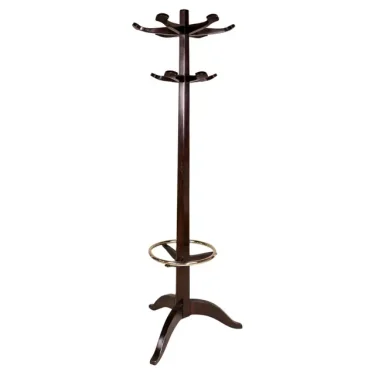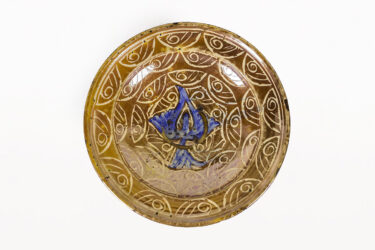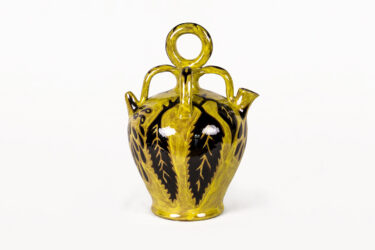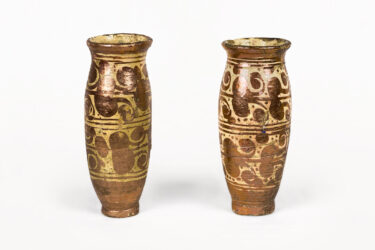Large Oval Ceramic Baccanal Plate by Jean Lurçat, Circa 1950, France.
Large Oval Ceramic Baccanal Plate by Jean Lurçat, Circa 1950, France. Large oval ceramic plate, with central decoration of a stylized baccanal scene with personage and leaves. Glazed black background with white, yellow and brown designs. Glazed signature “Dessin J. Lurçat. Sant-Vicens. 21H». Reference: CE0043.
CONDITION: Good condition. Wear consistent with age and use.
DIMENSIONS: Height: 45cm (18in) Width: 50cm (20in) Depth: 5cm (2in)
ABOUT THE DESIGNER: Jean Lurçat was a French artist and weaver who is credited with bringing tapestry back to contemporary popularity. His works often feature recurring motifs such as nature, animals, and the cosmos, and have become increasingly ambitious and detailed over time. Le Chant du monde (1957–1966), one of his most famous works, describes an entire cosmology of mythical figures from the ancient world. Born on July 1, 1892, in Bruyères, France, he studied at the Académie Colarossi, where his fellow students included Henri Matisse, Paul Cézanne, and Pierre-Auguste Renoir. In 1915, he had his first exhibition in Zurich, and in 1917, he completed Filles Vertes and Soirée dans Grenade, his first major work in tapestry. During the 1920s, the artist traveled in Europe, North Africa and various parts of Asia, while making commissioned tapestries, becoming one of the first Western artists to exhibit in Soviet Russia. Lurçat died on January 6, 1966 in Saint-Paul de Vence, France.
ABOUT THE STYLE: The decorative arts are arts or crafts whose aim is the design and manufacture of objects that are both beautiful and functional. This includes most of the objects for the interiors of buildings, as well as interior design, but typically excludes architecture. Ceramic art, metalwork, furniture, jewellery, fashion, various forms of the textile arts and glassware are major groupings. Applied arts largely overlap with the decorative arts, and in modern parlance they are both often placed under the umbrella category of design. The decorative arts are often categorized in distinction to the “fine arts”, namely painting, drawing, photography, and large-scale sculpture, which generally produce objects solely for their aesthetic quality and capacity to stimulate the intellect.

